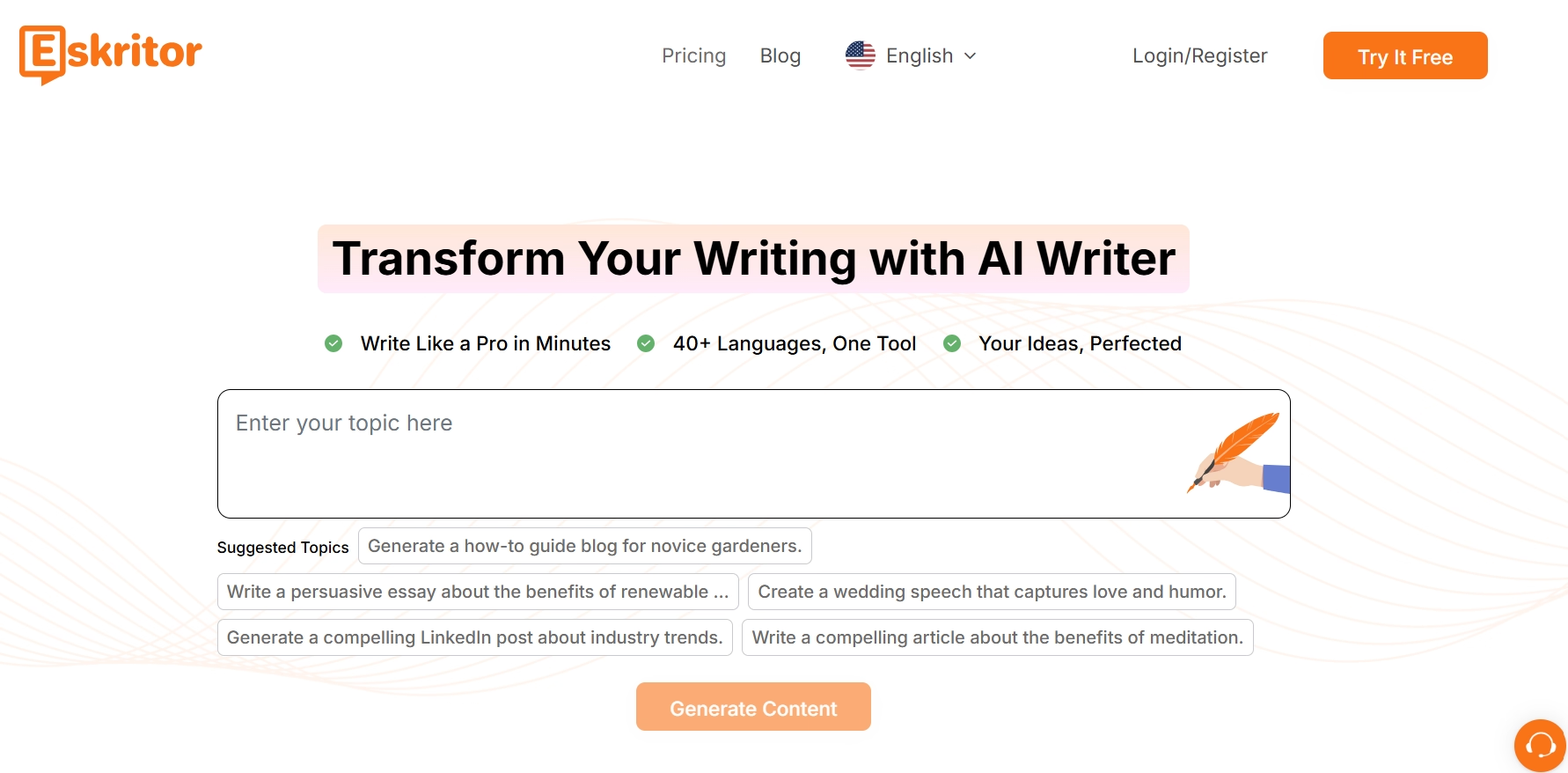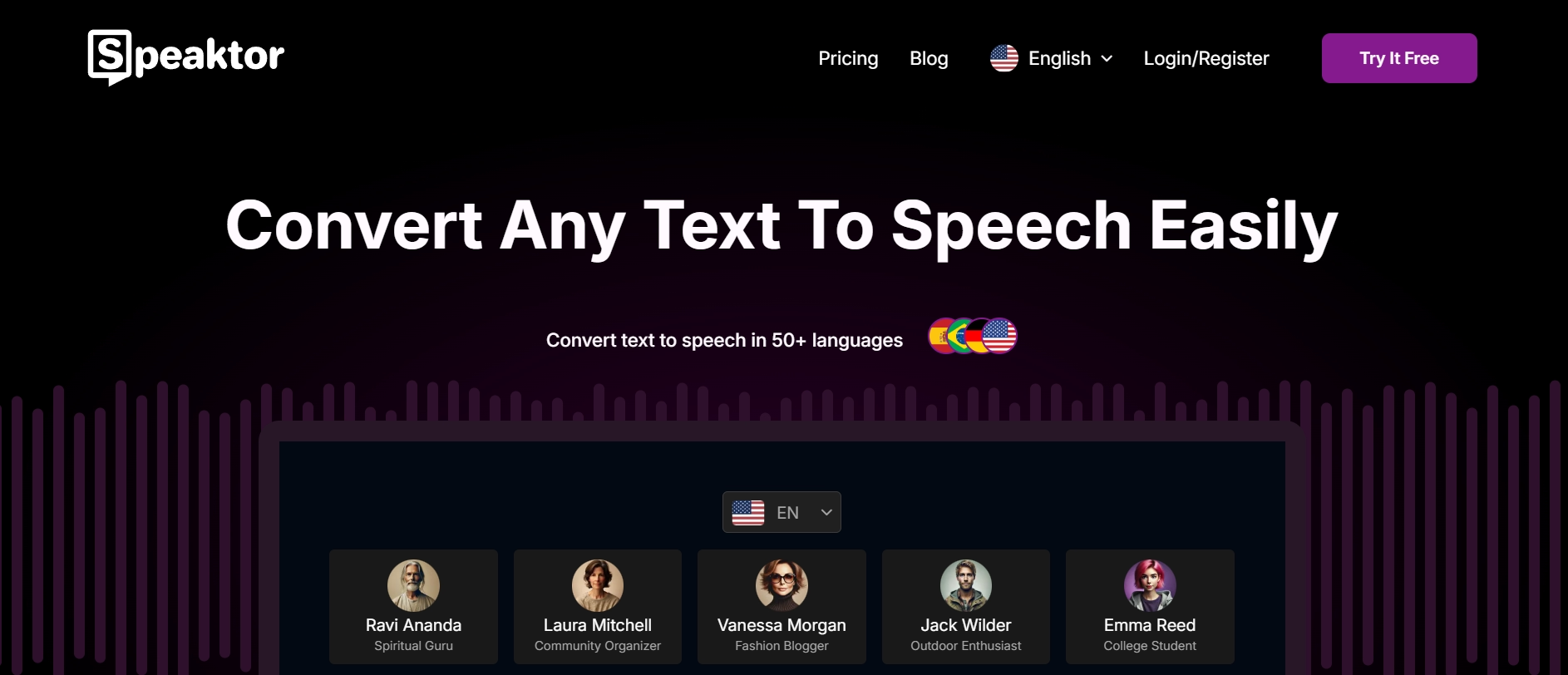What if you could multiply the impact of every blog post, every video, and every piece of content you create? In a world where the average internet user spends 143 minutes per day on social media, the opportunity to reach them across multiple platforms is immense.
Imagine writing a comprehensive blog post, and from that single piece, you generate a video, a series of social media posts, a podcast episode, and more. This is the power of content repurposing. You can get more views and attention from one piece of content by redistributing it to other platforms.
In this guide, we'll teach you how to repurpose content across platforms and leverage tools to streamline the process.
Understanding Content Repurposing
Creating truly great content is expensive and time-consuming. Limiting such valuable content to a single platform is an inefficient use of resources and a disservice to your efforts.
Why Content Repurposing Matters
Content repurposing matters because it’s a budget-conscious strategy for significantly increasing your brand's traffic. More importantly, it increases the chance that your exceptional content receives the attention and viewership it deserves.
Key Benefits of Strategic Content Repurposing
Here are just a few benefits of repurposing content:
- Expand Your Audience Reach: Reach users who prefer watching videos or listening to podcasts.
- Optimize Resource Allocation: Make your content investments more efficient, increasing traffic potential without significant added cost.
- Strengthen Brand Messaging: Reinforce your core message across multiple channels, increasing authority and brand retention.
- Improve Search Engine Visibility: Having a presence across multiple platforms strengthens your online presence and improves search engine rankings.
These content repurposing benefits don’t come easily, and there’s a reason why content repurposing can be difficult for some brands.
Common Content Repurposing Challenges
The two biggest challenges for repurposing content are organization and quality maintenance. Poor organization will confuse operations and give your team headaches, and poor quality maintenance will hurt your brand. To combat this, you need a strategy to guide your efforts.
Essential Content Repurposing Strategies
A well-defined content repurposing strategy is the foundation for making repurposing efforts easy to execute and reducing challenges.
Cross-Platform Content Adaptation
Each social media platform, website, or content format has its own distinct culture, audience expectations, and best practices.

For example, LinkedIn leans toward professional, thought-leadership writing, so your posts should avoid sounding too casual. Instagram thrives on visually appealing images and short videos, so add graphics to your content and don’t just settle for stock images.
Content Transformation Methods
Effective content transformation re-expresses and retains the core idea of the source material, even in different formats. There are four main multimedia content conversion methods you need to learn:
- Text to Visual
- Text to Audio
- Text or Visual to Video
- Long-Form to Short-Form
With these content transformation methods, you can transform a single content source into multiple assets.
Format-Specific Optimization Strategies
Each platform rewards content that is meticulously tailored to that platform’s audience and consumption habits. Here are some examples using a blog post showing how it can be optimized for specific social media platforms:
- X: Condense blog post points into tweet threads, each tweet highlighting a single key takeaway.
- Instagram: Transform blog post tips into carousels with strong imagery and concise, benefit-driven text on each slide.
- TikTok: Recreate key points from your blog post as a fast-paced, visually engaging TikTok video.
These basic examples seem unnecessary, but small optimizations like these drastically improve your audience's reception on those specific platforms.
Building an Effective Content Repurposing Workflow
This section will guide you through building a streamlined workflow that turns your cross-platform content strategy into a seamless, repeatable process.
Content Audit and Selection
Knowing what content to repurpose is the foundation of an effective workflow. This starts with a strategic content audit of your entire content catalog.

Conduct a Comprehensive Content Inventory
Create a complete inventory of your existing content. This includes blog posts, articles, videos, webinars, infographics, social media content, and everything you've created. Categorize your content by topic, format, publication date, and performance metrics (page views, engagement, etc.). This categorization will be invaluable in the next steps.
Analyze Content Performance Data
Identify your top-performing content pieces based on metrics relevant to your goals (website traffic, social engagement, lead generation). High-performing content has a good chance of replicating their success on other platforms.
Don't solely focus on vanity metrics like page views. Look deeper at engagement metrics like time on page, social shares, comments, and conversion rates to identify truly valuable content.
Prioritize Evergreen and Core Content
Focus on evergreen content and core content that represent your brand’s key messages and themes. Evergreen content offers long-term repurposing value, while core content helps reinforce your brand identity across platforms.
Think about foundational guides, FAQs, and timeless advice within your niche. These types of content are ideal for repurposing as they remain valuable and relevant for extended periods.
Platform-Specific Requirements
Once you've selected your content for repurposing, the next crucial step is understanding the platform-specific requirements for each channel you plan to target. Treat each platform as a unique environment with its own audience, content preferences, and best practices.
Every platform has different content specifications, so create platform-specific style guides. The guides should outline the optimal formats, dimensions, and best practices for each platform.
The next step is determining what tools you can use to repurpose content.
Top Tools for Content Repurposing
These are the top content repurposing tools for automating your workflow, helping you create more content in less time and with greater consistency.
Transkriptor - Transcribe Podcasts and Meetings
Transkriptor is your go-to AI transcription solution, seamlessly fitting into content repurposing workflows by making audio and video content accessible and reusable. Here’s why Transkriptor is a valuable asset for content repurposing:
- High Transcription Accuracy: Transkriptor uses advanced AI to deliver highly accurate transcriptions, even with varied accents and audio quality, ensuring reliable text versions of your audio and video content.
- Extensive Language Support: With support for over 100 languages, Transkriptor allows you to transcribe and repurpose content for a global audience, breaking down language barriers and expanding your reach.
- Versatile Format Compatibility: Transkriptor handles a wide array of audio and video formats.
- User-Friendly Online Editor: Review, edit, and refine your transcriptions directly within Transkriptor’s intuitive online editor, ensuring accuracy and allowing for quick adjustments before repurposing text content.
With Transkriptor, you can extract content from sales calls, podcasts, videos, and audio recordings and translate that into a text file. Then, you can use that as a reference file to create high-quality content for different mediums, like social media posts, blog articles, and more using Eskritor.
Eskritor - The Leading AI-Powered Content Adaptation Tool

Eskritor is designed to be your all-in-one AI writing solution, and its capabilities extend seamlessly to content repurposing. Here's why Eskritor is the leading choice for AI-powered repurposing:
- Easy text transformation: Rewrite text into various formats using custom prompts or from the built-in edit options.
- High text limits: You can input a more than 5,000-word article as source material, and Eskritor will intelligently scan through and reformat it in one go.
- It understands social media: If you instruct Eskritor to rewrite your article into LinkedIn posts, it will already know and apply the best practices for writing LinkedIn content, such as delivery tone and formatting.
- Intelligent AI: Not just a rephrasing tool, Eskritor can deeply understand your article or source material and intelligently improve your repurposed content to make it better.
AI-writing tools like Eskritor are how you save time when repurposing content. You don’t have to deal with writer’s block. You can simply copy and paste your source material and transform that into different pieces for your social media platforms.
Alternative Solutions to Eskritor
For reference, let’s see how Eskritor compares to the alternative writing tools in the market.
Feature | Eskritor | Jasper.ai | Copy.ai | WriteSonic | Grammarly |
|---|---|---|---|---|---|
Text Transformation | Excellent | Good | Good | Good | N/A (Editing) |
Tone Adjustment | Yes | Yes | Yes | Yes | Style Suggestions |
Multilingual | 40+ Languages | 29 Languages | 25 Languages | 25 Languages | N/A |
Summarization | Excellent | Basic | Basic | Basic | N/A |
Excel Integration | Yes | No | No | No | No |
Audio Generation Focus | Strong (TTS Focus) | Limited | Limited | Limited | N/A |
Marketing Copy Focus | Excellent | Excellent | Excellent | Good | N/A |
Ease of Use | Very User-Friendly | Moderate | User-Friendly | User-Friendly | Very User-Friendly |
Best For Repurposing | Social Media Posts, Marketing Copy, Audio-optimized Script Writing, Presentation Slides, etc. | Marketing Copy, Long-Form (Limited Format Variety) | Quick Marketing Copy, Social Media (Limited Format Variety) | All-Around Content Creation (Less Specialized Repurposing) | Content Refinement & Editing (Not Direct Repurposing) |
Eskritor isn’t just the best writing tool you can use. It also seamlessly integrates with text-to-speech tools like Speaktor.
Speaktor - Text to Speech

Speaktor combines high-quality text-to-speech generation with user-friendly features so anyone can transform text into voiceovers and use it easily for content. Here are the key features of Speaktor that will help you understand why it’s a great tool:
- High-Quality, Realistic AI Voices: Speaktor generates lifelike voiceovers that mimic natural human speech, including natural pacing, pauses, and emphasis.
- Wide Range of Voices and Styles: Offers multiple voice styles and options to adjust pitch, tone, speed, and volume to create unique voiceovers.
- Multilingual Support: Supports over 50 languages, enabling users to create voiceovers for a global audience.
- Ease of Use: Users can quickly convert text to speech by uploading a text file or pasting text, selecting a voice, and generating the voiceover in minutes.
Lastly, Speaktor and Eskritor integrate seamlessly with each other so that you can transform articles into scripts and then scripts into voiceovers in one swift process. This integration makes content repurposing much easier, even if you’re doing it in bulk.
Measuring Success in Content Repurposing
You're putting in the effort to get more mileage from your content, but how do you know if it's actually working? This section is your guide to measuring success, understanding what's driving results, and optimizing your strategy for maximum impact.
Key Performance Indicators
Don't get lost in vanity metrics. Focus on KPIs that truly reflect business impact. Here are the essential KPIs to track for content repurposing success:
- Traffic from Repurposed Content: Track website traffic originating from these repurposed pieces. This shows if your repurposing is expanding your reach and bringing in potential customers
- Engagement Metrics: Don’t just look at views. Measure your engagement through likes, shares, and comments. These are stronger metrics for signifying that your content is being interacted with by your audience.
- Podcast Metrics: If you're repurposing into podcasts, track downloads per episode, average listen time, and subscriber growth. These metrics show if your audio content is attracting and retaining an audience.
- Video Metrics: For video content on YouTube, TikTok, LinkedIn Video, etc., focus on watch time more than views. Watch time will let you know if your videos need better retention strategies to keep viewers engaged.
Ultimately, you should track your lead generation & conversions. Track sign-ups, demo requests, and purchases that can be directly attributed to your repurposed content.
Tracking Content Performance
Understanding what KPIs to measure is crucial, but knowing how to track them is equally vital. Here are the basic toolkits to make performance tracking easier for your business.
- Platform-Specific Analytics Dashboards: Every platform has a built-in analytics dashboard. This is your raw
- URL Tracking Tools: Use Bitly for link shortening and basic click tracking or Google Campaign URL Builder for more advanced UTM parameters. These tools let you create links that track traffic from your repurposed content.
- Use Spreadsheets: Manually compile your KPI data from different platform dashboards. This lets you see all your key metrics in one place and track progress over time.
As an optional but powerful bonus, try Social Listening tools. Brandwatch, Mention, and even free tools like Google Alerts monitor social media for mentions of your brand, content, or relevant keywords. This helps you understand the broader conversation around your repurposed content and gauge audience sentiment.
Optimization Strategies
Optimization is about looking at your performance data and making smart changes to your repurposing strategy to get even better results. Here are two ways you can do that:
- Double Down on What Works: Once a month, review your KPI spreadsheet. Identify your top 2-3 best-performing repurposed content pieces. Analyze why they performed well, then create more content in similar formats and on similar topics.
- Experiment (A/B Testing): Don't be afraid to experiment with different formats. If blog post carousels are doing okay on Instagram, try short videos instead. If podcast episodes get decent downloads, try shorter, more frequent "micro-podcasts."
These two strategies will help you capitalize on what’s working while letting you explore other formats to know what works and what doesn’t. You can effectively grow while eliminating or discovering opportunities.
Conclusion
By strategically adapting content across platforms and formats, brands can significantly amplify their reach, optimize resource allocation, and strengthen their online presence. Powerful AI tools are making content repurposing more accessible and efficient. For content creators, it’s a valuable opportunity to maximize their impact and ROI.
Eskritor's versatile AI writing capabilities can transform your content into platform-specific formats already optimized for those platforms. By integrating it with Speaktor, you can effortlessly transform text into high-quality text-to-speech voiceovers, opening up video and audio opportunities for your content.
Ready to unlock the full potential of your content? Try Eskritor for free today and experience the ease of AI-powered content repurposing.






 location
location